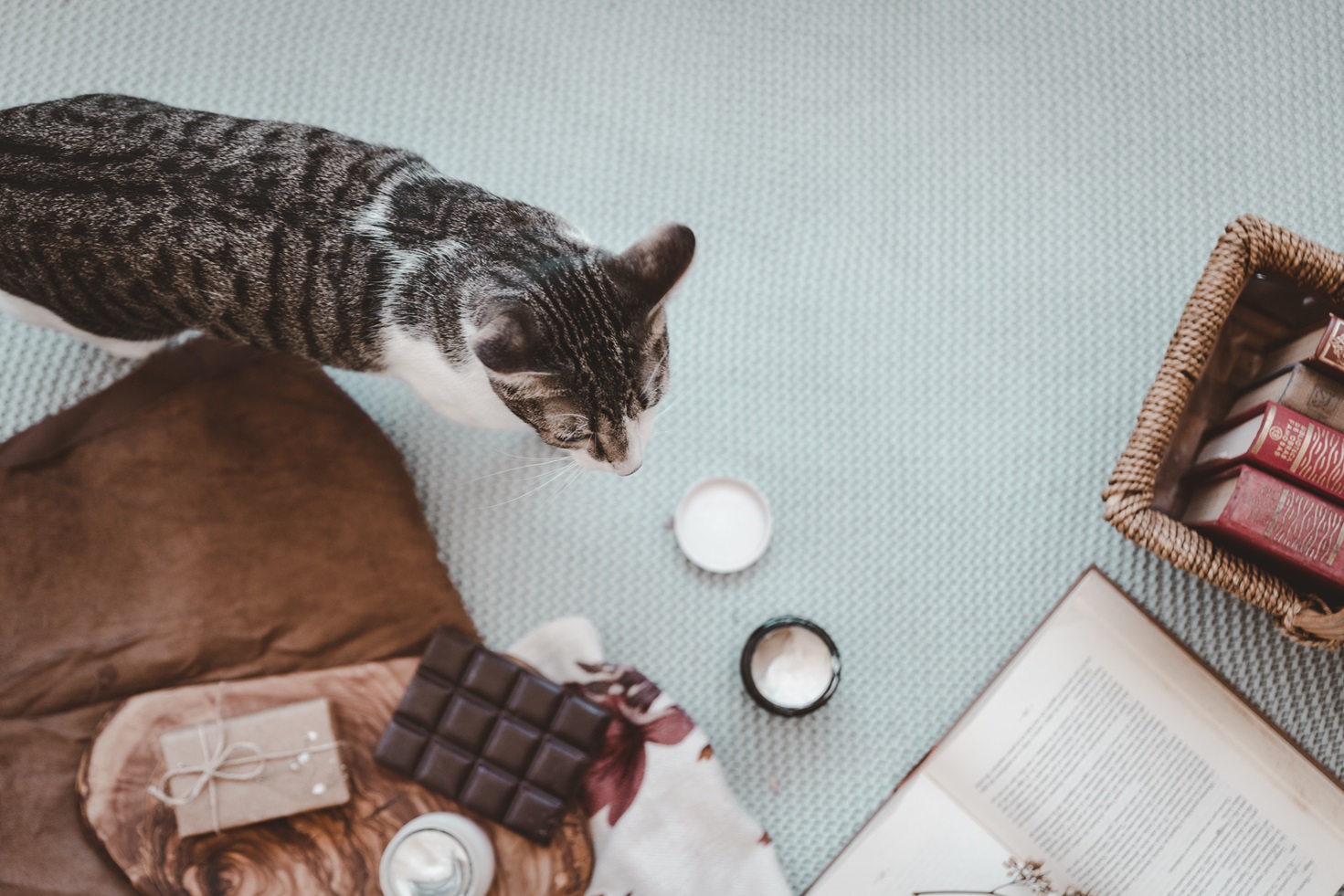Chocolate is a beloved treat for humans, but when it comes to pets, this indulgence can be harmful—even life-threatening. While much of the focus on chocolate toxicity centers on dogs, it is equally important to consider its impact on cats. So, can cats have chocolate? The short answer is no. Chocolate is toxic to cats and should never be included in their diet. Here, we explore why chocolate is dangerous for cats, the symptoms of chocolate poisoning, and what to do in case of exposure.
Why Is Chocolate Toxic to Cats?
Chocolate contains two primary substances that make it dangerous for cats: theobromine and caffeine. Both are naturally occurring compounds found in cacao plants, and while they may provide humans with a mild energy boost and pleasurable sensation, they are metabolized differently by cats.
Cats’ livers lack the enzymes necessary to break down these compounds effectively. As a result, even small amounts of chocolate can lead to toxicity. The severity depends on the type of chocolate consumed:
- Dark chocolate and cocoa powder contain higher concentrations of theobromine, making them particularly dangerous.
- Milk chocolate contains less theobromine but is still harmful.
- White chocolate has minimal theobromine but can still cause issues due to its sugar and fat content.
Symptoms of Chocolate Poisoning in Cats
Chocolate poisoning in cats can manifest quickly or over several hours, depending on the amount and type of chocolate consumed. Common symptoms include:
- Vomiting or diarrhea
- Increased heart rate
- Restlessness or hyperactivity
- Tremors or seizures
- Muscle rigidity
- Excessive thirst and urination
- In severe cases, coma or death
Because cats are naturally less inclined to eat chocolate compared to dogs (due to their lack of a sweet taste receptor), incidents of chocolate poisoning in cats are less common. However, this does not make them immune to the risks.
What to Do If Your Cat Eats Chocolate
If you suspect your cat has ingested chocolate, take immediate action:
- Identify the type and amount of chocolate consumed. This information will help the veterinarian assess the severity of the situation.
- Contact your veterinarian or an animal poison control hotline as soon as possible. Time is critical in managing chocolate toxicity.
- Do not attempt to induce vomiting unless directed by a professional. Certain home remedies can do more harm than good.
Veterinary treatment may include administering activated charcoal to prevent further absorption of toxins, intravenous fluids to flush out the system, or medications to control symptoms like seizures or irregular heartbeats.
Prevention Is Key
The best way to protect your cat is to ensure chocolate is always out of reach. Cats are curious creatures, and even if they typically avoid sweet foods, they might nibble on chocolate out of curiosity or boredom. Store chocolate products in sealed containers and avoid leaving them unattended on countertops or tables.
If you want to share a treat with your cat, stick to foods specifically formulated for feline consumption. Cat-friendly treats are safe, nutritious, and satisfying for your pet without the risks associated with human foods.
Conclusion
While it may be tempting to share your favorite foods with your furry friend, some human indulgences, like chocolate, can pose serious health risks to cats. Understanding the dangers and taking precautions can prevent accidental poisoning and ensure your cat stays happy and healthy. When in doubt, always consult your veterinarian before introducing new foods into your cat’s diet.
By prioritizing safety and making informed decisions, you can keep your feline companion safe from harmful substances and provide them with a long, joyful life.

